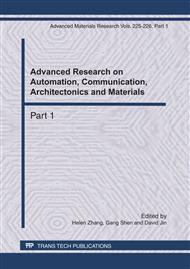p.1250
p.1254
p.1258
p.1262
p.1266
p.1270
p.1274
p.1279
p.1284
Study on Improved Genetic Algorithm for Min-Max Vehicle Routing Problem
Abstract:
The present study is focused on the Min-Max Vehicle Routing Problem (MMVRP). Improved genetic algorithm is used to get the optimization solution. First of all, use natural number coding so as to simplify the problem; apply insertion method so as to improve the feasibility; retain the best selection so as to guard the diversity of group; adopt self-adaptive method to strengthen the partial searching ability of chromosome. Finally, the good performance of improved algorithm can be proved by experiment calculation and concrete examples.
Info:
Periodical:
Pages:
1266-1269
Citation:
Online since:
April 2011
Authors:
Price:
Сopyright:
© 2011 Trans Tech Publications Ltd. All Rights Reserved
Share:
Citation:


